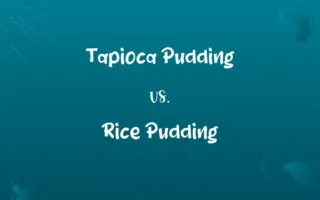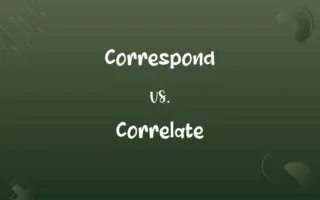8085 vs. 8086: Know the Difference

By Shumaila Saeed || Published on February 7, 2024
The 8085 is an 8-bit microprocessor by Intel with a 5 MHz clock speed, while the 8086 is a 16-bit microprocessor with up to 10 MHz speed, also by Intel, introducing the x86 architecture.

Key Differences
The 8085 microprocessor, introduced by Intel in 1976, operates on an 8-bit architecture and is commonly used in embedded systems. The 8086, released in 1978, marks a significant advancement with its 16-bit architecture, paving the way for the x86 architecture that became foundational in personal computing.
Shumaila Saeed
Feb 07, 2024
In terms of processing power, the 8085 has a clock speed ranging up to 5 MHz, which is suitable for basic computational tasks. The 8086, on the other hand, offers a higher clock speed of up to 10 MHz, enhancing processing capabilities and efficiency for more complex tasks.
Shumaila Saeed
Feb 07, 2024
Regarding memory addressing, the 8085 can address up to 64 KB of memory, which fits its simpler applications. The 8086, with its 16-bit architecture, significantly extends this capacity by being able to address up to 1 MB of memory, allowing for more robust and diverse software applications.
Shumaila Saeed
Feb 07, 2024
The instruction set of the 8085 is relatively basic and limited compared to the 8086, which introduced a more complex and versatile instruction set, supporting a broader range of programming functionalities and making it more suitable for advanced computing needs.
Shumaila Saeed
Feb 07, 2024
The 8085 requires an external clock generator, whereas the 8086 has an in-built clock generator, making it more integrated and efficient in design. This distinction reflects the advancements in microprocessor technology between the two models.
Shumaila Saeed
Feb 07, 2024
ADVERTISEMENT
Comparison Chart
Memory Addressing
Addresses up to 64 KB of memory
Addresses up to 1 MB of memory
Shumaila Saeed
Feb 07, 2024
ADVERTISEMENT
8085 and 8086 Definitions
8085
8085 operates at a clock speed of up to 5 MHz.
The 8085's 5 MHz speed was adequate for basic computational tasks of its time.
Shumaila Saeed
Jan 18, 2024
8086
The 8086 is a 16-bit microprocessor by Intel.
The 8086 was a significant step in the evolution of microprocessors.
Shumaila Saeed
Jan 18, 2024
8085
8085 requires an external clock generator.
Designers had to incorporate an external clock with the 8085 in their systems.
Shumaila Saeed
Jan 18, 2024
8086
8086 includes an in-built clock generator.
The integrated clock generator made the 8086 more efficient in design.
Shumaila Saeed
Jan 18, 2024
8085
8085 uses a basic instruction set for operations.
The instruction set of the 8085 was straightforward, easing the learning curve for beginners.
Shumaila Saeed
Jan 18, 2024
ADVERTISEMENT
8086
8086 operates at a clock speed of up to 10 MHz.
The higher speed of the 8086 enabled more complex computing tasks.
Shumaila Saeed
Jan 18, 2024
8085
The 8085 is an 8-bit microprocessor developed by Intel.
The 8085 was widely used in the design of early personal computers.
Shumaila Saeed
Jan 18, 2024
8086
8086 has a more complex instruction set.
The versatility of the 8086's instruction set supported diverse programming needs.
Shumaila Saeed
Jan 18, 2024
8085
8085 can address up to 64 KB of memory.
Memory limitations of the 8085 made it suitable for smaller, embedded systems.
Shumaila Saeed
Jan 18, 2024
8086
8086 can address up to 1 MB of memory.
The expanded memory capacity of the 8086 allowed for advanced software applications.
Shumaila Saeed
Jan 18, 2024
Repeatedly Asked Queries
What distinguishes the 8086 in usage?
The 8086 is suitable for more complex computing, including early personal computers.
Shumaila Saeed
Feb 07, 2024
What is the clock speed of the 8085?
The 8085 has a maximum clock speed of 5 MHz.
Shumaila Saeed
Feb 07, 2024
What is the 8085 microprocessor?
The 8085 is an 8-bit microprocessor designed by Intel.
Shumaila Saeed
Feb 07, 2024
What type of instruction set does the 8085 have?
The 8085 has a relatively simple and limited instruction set.
Shumaila Saeed
Feb 07, 2024
What are the main uses of the 8085?
The 8085 is primarily used in embedded systems and simple computational devices.
Shumaila Saeed
Feb 07, 2024
What is the clock speed of the 8086?
The 8086 can operate at speeds up to 10 MHz.
Shumaila Saeed
Feb 07, 2024
How much memory can the 8086 address?
The 8086 can address up to 1 MB of memory.
Shumaila Saeed
Feb 07, 2024
How does the 8086's instruction set compare?
The 8086 features a more complex and versatile instruction set.
Shumaila Saeed
Feb 07, 2024
What is the 8086 microprocessor?
The 8086 is a 16-bit microprocessor, also designed by Intel.
Shumaila Saeed
Feb 07, 2024
How much memory can the 8085 address?
The 8085 can address up to 64 KB of memory.
Shumaila Saeed
Feb 07, 2024
Does the 8086 have an in-built clock generator?
Yes, the 8086 includes an in-built clock generator.
Shumaila Saeed
Feb 07, 2024
Can the 8085 support complex operating systems?
The 8085 is not suited for complex operating systems due to its limited capabilities.
Shumaila Saeed
Feb 07, 2024
Is the 8085 still in use today?
While outdated, the 8085 is still used in some educational and embedded applications.
Shumaila Saeed
Feb 07, 2024
What was the impact of the 8086 on later microprocessors?
The 8086 set the foundation for the x86 architecture, influencing subsequent microprocessor designs.
Shumaila Saeed
Feb 07, 2024
What architecture does the 8086 use?
The 8086 is based on a 16-bit architecture.
Shumaila Saeed
Feb 07, 2024
Does the 8085 require an external clock generator?
Yes, the 8085 requires an external clock generator.
Shumaila Saeed
Feb 07, 2024
Was the 8086 influential in computing history?
Yes, the 8086 played a key role in the development of the x86 architecture.
Shumaila Saeed
Feb 07, 2024
Share this page
Link for your blog / website
HTML
Link to share via messenger
About Author
Written by
Shumaila SaeedShumaila Saeed, an expert content creator with 6 years of experience, specializes in distilling complex topics into easily digestible comparisons, shining a light on the nuances that both inform and educate readers with clarity and accuracy.





































































